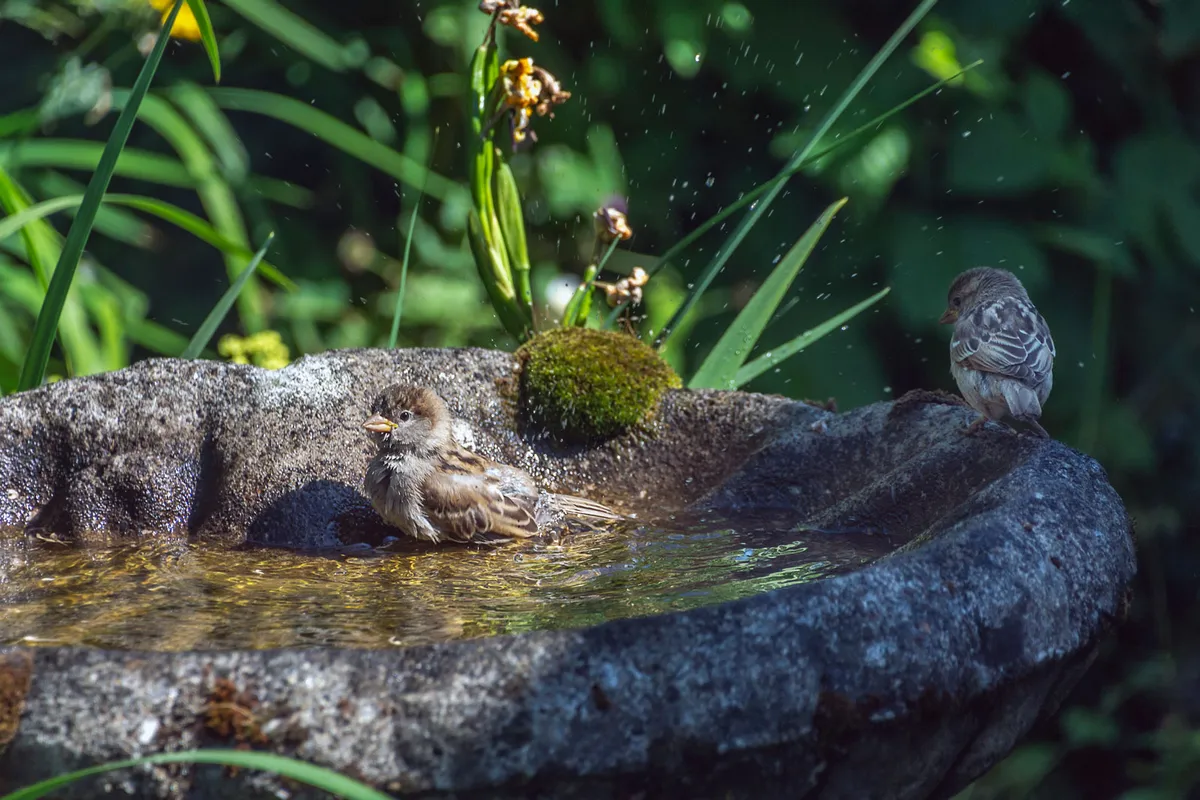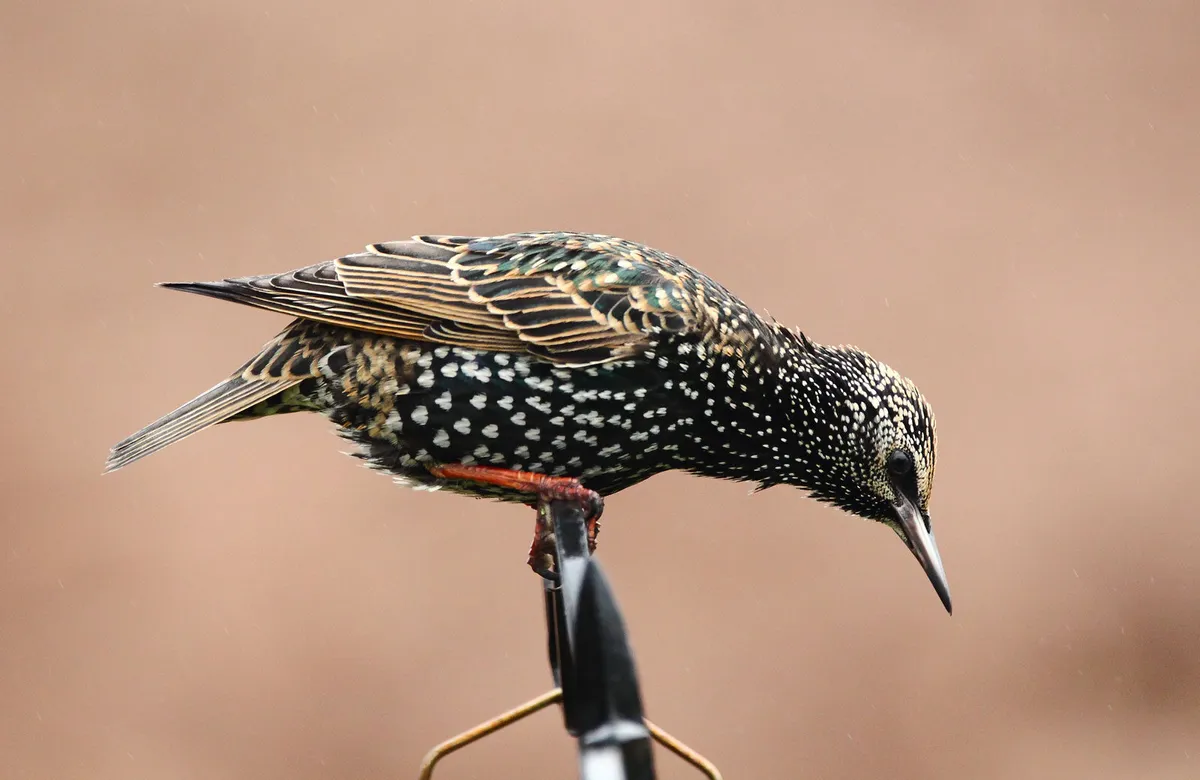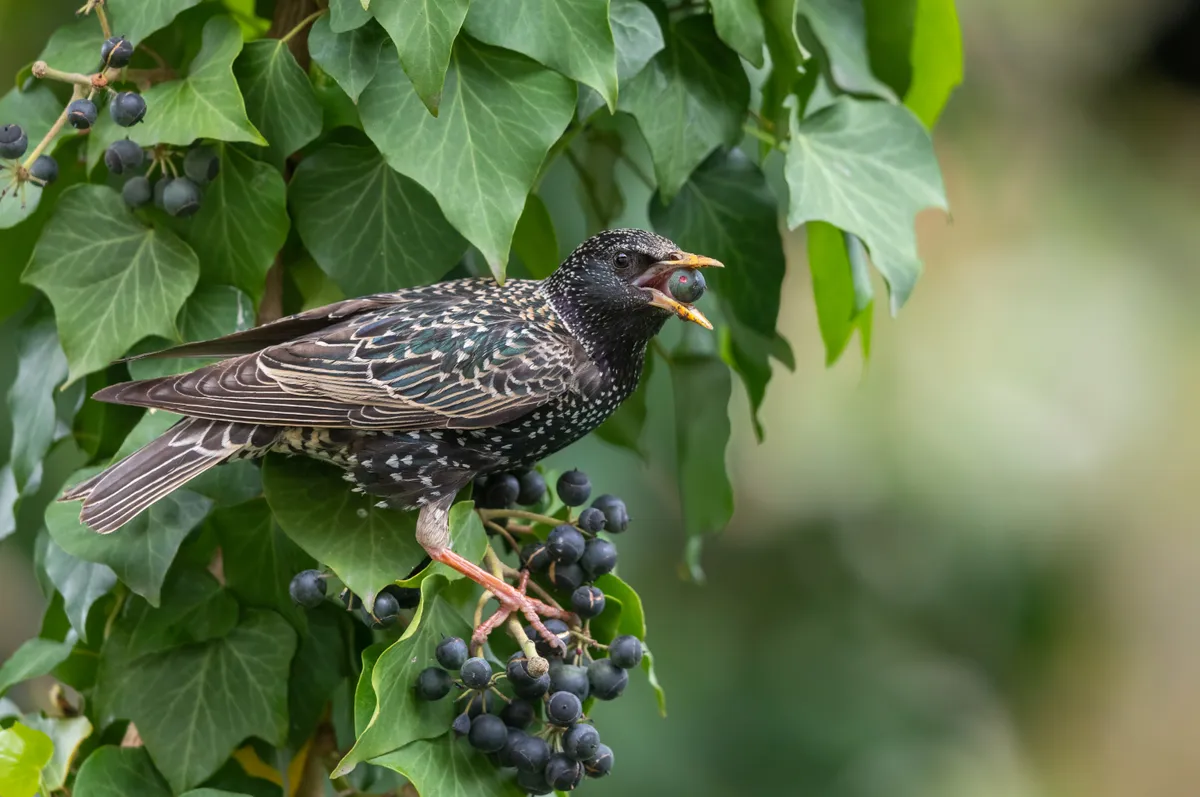Watching birds in your garden is always a delight. From the characterful robin to the tiniest wren or colourful blue tit, each species has its own unique pattern of behaviour.
Whether you’re new to birdwatching or looking to advance your garden bird knowledge, our guide explains how to identify common species and care for the birds which visit your garden.
We’ve also included a bit more information about the best foods to feed garden birds and tips on helping them stay healthy. Alternatively, you can check out our full guide to the best food for feeding wild birds in your garden.
In this expert guide, we have covered some of the most common garden birds you’re likely to spot, but each garden is different and you may have other avian visitors depending on where you live in the UK and the climate.
Create a garden filled with birdlife with our expert guide on how to care for wild birds, including the best foods to feed the different species and tips on how to attract birds to your garden.
How to help your garden birds stay healthy
Feeding birds in your garden can be a really rewarding experience, but there can be some unfortunate consequences. We all know that bird feeders attract birds, but encouraging birds to congregate together and share food can aid in the spread of avian diseases.

Good hygiene is vital, particularly in the devastating wake of bird flu. We can help keep diseases at bay by making sure that feeders, tables and bird baths are cleaned regularly. Sweep up and discard crumbs from beneath feeders frequently and if you can change feeding sites every so often to avoid a build-up of droppings, even better. The birds will thank you for it by staying healthy, while feeders and tables will last longer with regular spring cleans and maintenance. Wear gloves when doing this and let the feeders dry in the fresh air.
Greenfinches seem to be particularly susceptible to a disease called Trichomonosis. It is caused by a microscopic parasite that blocks the infected bird’s throat and stops it from being able to swallow. Unfortunately there is no effective treatment that can be given to birds in the wild and infection usually results in the bird dying of starvation.
More related content:
- Our guide to robins: where to see, top facts and how to attract robins to your garden
- Big Garden Birdwatch 2023: how to take part and garden birds to spot
- 16 of the UK’s top garden bird species suffer decline, finds Big Garden Birdwatch 2021
- How to make a log bird feeder
Robin on a perch./Credit: Getty

What can I do to help a sick bird?
Unfortunately wild birds cannot be treated for disease because it is too difficult to ensure that the medicine goes to the right birds in the right dosages. It is also difficult to diagnose a bird from observation alone.
The best thing you can do is to temporarily stop feeding birds in your garden and disinfect everything. You do not want birds to congregate together in your garden as this will allow the disease to spread to healthy individuals. This means removing feeders and emptying bird baths. Once you stop seeing dead/sick birds you can start feeding again.
What is the best feed for different bird species?
1
Blackbird

The female is actually brown and occasionally you get white individuals. One of our most familiar birds, it has a wonderful song. It loves earthworms, so live mealworms are a great favourite, as is blackbird muesli, made from dried fruit, oats and sunflower hearts.
2
Blue tit

This cheeky little bird readily feeds and nests in gardens. Blue, yellow and white with a piercing call, it is always welcome and, being an aphid eater, it is a great pest controller. Keep it visiting with peanuts and suet nibbles.
Guide to Britain’s tit species: how to identify and where to see
3
Chaffinch

Less agile than the greenfinch, chaffinches often lurk beneath feeders waiting for crumbs. Frequently attacking their own reflection when establishing nesting territory, the males are multi-coloured birds with an unmistakable song. Primarily seed eaters, chaffinches also like fruit and suet.
British finches: how to identify and where to see
4
Great tit

Considerably larger than its cousin the blue tit, the great tit has an unmissable glossy black-and-white head. It sings a complicated range of notes with a scolding churr when displeased. Also an insect lover, it will compete with the blue tit for mealworms, peanuts, sunflower hearts and suet nibbles.
5
Robin

Traditionally pictured perched on spade handles, there are no prizes for guessing that the robin loves worms. Our national bird, it entertains us with its melodious song all year round. Loves mealworms, suet sprinkles, sunflower hearts and oats so it’s easy to keep this ‘Christmas’ bird in your garden.
6
Starling

Sometimes seen as a bully boy at feeders, arriving mob-handed, the starling is a gregarious, glossy black bird with white spots. A great mimic, the starling has a wide variety of calls and whistles. Its numbers have plummeted so welcome it; it will eat just about anything.
Starling murmuration guide: why and when they happen and best places to see one in the UK
7
Goldfinch

A more recent arrival at bird feeding stations, the goldfinch is making up for lost time. Sometimes flocks of this yellow, brown and black, red-faced bird with a delightful twittering song will descend on to feeders. Originally attracted by nyger seed, it will eat sunflower hearts and small seeds, too.
8
House sparrow

9
Dunnock

Similar to a small, female house sparrow with fewer markings and a more slender beak, the dunnock is the mouse of the bird world, content to creep beneath feeders and bird tables gathering crumbs. This LBJ (little brown job) has a rather lovely musical warble, more than making up for its drabness.
10
Greenfinch

Olive-green with lots of yellow, the male greenfinch is stunning. Dominant at bird feeders but a sporadic visitor, it will leave plenty for the other birds. Hit by disease in recent years, it will appreciate your help, and loves seeds, with sunflowers being favoured.
11
Song thrush

Singing from the treetops, this bird is hard to ignore. Soft brown in colour and with a fabulously speckled breast, it sings with an huge range of notes, repeated in phrases of three. Keep this thrush singing with oats, sultanas and mealworms.
12
Wren

A charming, tiny reddish-brown bird with an upright tail; what the wren lacks in size it makes up for with its voice and industriousness. A rattling warble of clear, shrill notes gives way to the loud ‘tic-tic-tic’ of its alarm call if you venture too close. Give it the energy to build its lovely little nest by supplying fine breadcrumbs, minced peanuts and oatmeal.
Where are birds nests usually found?
Nests can be found anywhere well hidden and protected in gardens, parks and the countryside. Some birds, like the long-tailed tit and the house sparrow, prefer to build in trees up to 20m high, whereas the robin makes its home closer to the ground, buried in ivy and tree roots. Finches also like to be lower down in bushes and low trees.

Different species make their nests out of different materials; swallows and house martins, for example, build their nests out of wet mud plastered onto walls or beams. Blackbirds make their home from twigs and leaves which they stick together with mud and moss high up in the trees.
Most species use their nest purely for laying eggs and raising chicks but some, such as tits, tawny owls and woodpeckers, will use them to sleep all year round.
Spotted a nest in your garden? Great - keep an eye on it and you may hear the cheeping of baby hatchlings soon. Just make sure you don't get too close or touch the nest or the eggs.
What should I do if I find a baby bird?
Fledgling birds normally leave their nests at around two weeks old, where they flop down onto the ground. It often seems like they have been abandoned by their parents, but this is usually not the case.

It is best not to disturb baby birds if they are spotted away from their nest. If the birds are found on the ground they should be left alone. Taking them away from their parents at this point in their lives will do more damage than good. If you are worried, keep an eye on the baby for a while - it’s more than likely its parents will return with its meal. If you intervene it may cause the mother to reject the baby, causing much more pain for the little one and the parent.
How to attract birds to your garden
Providing natural food for garden birds, in addition to keeping bird feeders well topped up, can make a huge difference to birds’ survival in the winter weather ahead. Choose your shrubs well and you can also create shelter in bad weather, roosting sites for frosty nights, and nesting places for next spring, says wildlife gardener Jenny Steel
Best native plants for attracting birds
Native shrubs can support large numbers of small insects – great for feeding nestlings – as well as encouraging birds such as tits, warblers and sparrows. In the winter, large flocks of redwings and fieldfares, the beautiful thrushes that visit our warmer shores from Scandinavia, relish the berries that our countryside offers. Plant these shrubs now in existing hedges, create new hedges, or add them to a garden corner to create a dense, bird-friendly mini-woodland.
Holly
Slow growing, but probably the ultimate in bird-friendly hedging. Dense, prickly and evergreen, it ensures windproof shelter on cold winter nights. On top of that, holly provides the familiar bright red berries that we love at Christmas time, but the blackbirds and thrushes are likely to get them before you do. Holly, whether in a hedge or as a stand alone shrub, has great nest sites plus its spring flowers provide nectar and pollen for a variety of insects, including the little holly blue butterfly.

Hawthorn
Grow this in a hedge or as a small tree if you have space. The dark red haws are sought out by flocks of redwings and fieldfares in the winter and hawthorn’s prickly stems ensure good nesting places for finches, dunnocks, robins and blackbirds. Also has lots of small caterpillars for spring nestlings.

Guelder Rose
This native shrub also has red berries but they ripen early and are softer than those of holly and hawthorn, making them more appealing to smaller birds, including blackcaps, garden warblers and robins, plus song thrushes and, if you are lucky, waxwings. Again, this shrub attracts plenty of insects for adult birds feeding their chicks.
Dogwood
A great native shrub for a garden as it can be cut down in early spring to produce attractive red stems for the following winter. The black berries are eaten by many birds including finches, robins, pigeons, thrushes and starlings.
Ivy
Mature ivy has a mass of very late ripening berries when many other natural food sources have been depleted. Garden birds, especially song thrushes and wood pigeons, enjoy these. There is also plenty of shelter for nests and roosting when this useful climber is grown up against a fence or wall.

Non-native plants
There are a good range of non-native shrubs and trees that produce colourful, nutritious berries for your garden birds, supplying them with winter food as well as nest sites and shelter.
Cotoneaster horizontalis
The herringbone cotoneaster is a must-have for autumn colour in even the smallest garden. It produces masses of red berries plus sheltered nesting and roosting sites when grown against a wall. Blackbirds and thrushes will defend this shrub vigorously to make sure they get all the berries.
Sorbus Sheerwater Seedling
Our native rowan (Sorbus aucuparia) is a wonderful small tree for a garden, but the variety sheerwater seedling takes up less space yet still has all the advantages. Mistle thrushes, blackbirds, nuthatches, starlings and waxwings strip the berries in autumn.

Pyracantha Orange Glow
This is an attractive prickly shrub providing protection from predators and plenty of food for birds. The orange berries are devoured by finches, sparrows, starlings, blackcaps and song thrushes; the white spring flowers buzz with small insects and it has good nesting places.
Berberis darwinii
This spiky evergreen shrub is ideal for a hedge or bird friendly corner. It has lots of bright orange bee-attracting flowers in spring and bunches of blue berries for blackbirds, thrushes and waxwings in autumn. It’s also a favourite roosting place in harsh weather and provides excellent protected nest sites.
Malus
Planting a sweet, early ripening eating apple this month is an excellent way of providing food for your garden birds. Early varieties such as beauty of bath or discovery don’t keep well, so pick and eat what you need and leave the rest for your blackbirds, song and mistle thrushes, chaffinches, redwings and fieldfares.
Find great present ideas for fellow twitchers in our guide to the best gifts for bird lovers.
